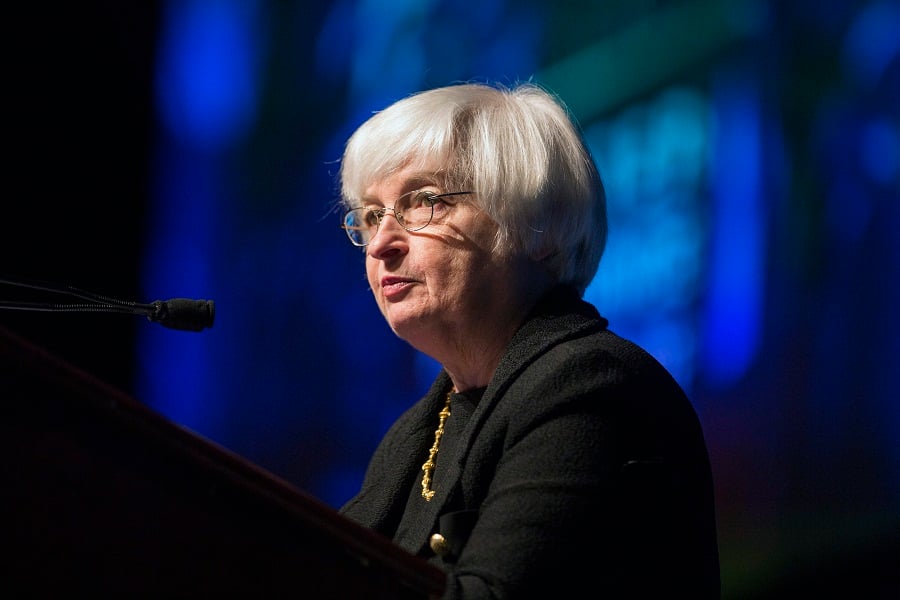We've recently been reminded that, for better or worse, the world is more connected than ever. A steep correction in China's stock market last quarter, touched off by concerns over the country's slowing economy, rattled global commodity prices, emerging-market equities, and currencies. China's policy response spread from the traditional steps of reducing interest rates and reserve requirements to the more adventurous leaps of intervening in its stock market by purchasing shares and devaluing its currency, the yuan, by 3% against the U.S. dollar.
The devaluation was small in light of the long and treasured history of currency movements, but it was a milestone event nonetheless. It was the first time China had devalued its currency in 21 years and signaled China's unwillingness to keep its currency pegged to the U.S. dollar as the Federal Reserve moves closer to raising rates while other central banks pursue easier policies designed to help keep their currencies competitive.
(More: China cast a pall over global markets in third quarter)
Doubts about China led to a late-August sell-off in equities and marked the first greater than 10% correction for the S&P 500d since 2011. Acknowledging that recent global economic and financial events could restrain the outlook for growth somewhat and reduce inflation in the near term, the Federal Reserve opted to delay raising interest rates at its September meeting.
The Fed and market participants have been expecting to transition from a liquidity-driven environment to a growth-driven one for some time now. Rolling developments — harsh winter weather in the U.S., a Greek-European fiscal showdown, and a slowdown in China — have pushed back the anticipated start date for Fed tightening more than once this year. The interest rate path matters more than the actual Fed tightening start date, and interest rates will slowly increase over time.
RESTORATION OF VALUE
Valuations improved as a result of the recent volatility. The forward price-earnings ratio of the S&P 500, based on consensus expectations of earnings in the year ahead, was brought into line with its long-term average. Yields jumped on a number of high-yield bonds, especially in the energy and industrial commodity sectors. Investment-grade taxable and tax-exempt bond yields widened their spreads, relative to Treasury yields, to more attractive levels.
One dynamic that didn't happen: Treasury bonds didn't act as safe havens the way they commonly do during periods of heightened uncertainty. During August, China's U.S. dollar reserves fell by a record $94 billion as it reduced its holdings of foreign bonds — namely U.S. Treasury securities — in response to private-sector capital outflows, according to the Financial Times. This may have prevented Treasury yields from falling as we would have expected.
(More: Putting your dry powder to work)
The biggest uncertainties today seem to center on the outlook for global growth, which has been tested of late. The Federal Reserve Bank of St. Louis indicator of recession probabilities currently places the odds of a pending recession at 1%.
In its most recent World Economic Outlook update, the International Monetary Fund envisioned global economic growth picking up to 3.8% next year, from 3.3% in 2015; growth in advanced economies is expected to increase to 2.4%, from 2.1%, while growth in emerging and developing economies is expected to increase to 4.7%, from 4.2%. If close to the mark, the outlook for earnings may stabilize and improve.
SIGNPOSTS
What are some of the signs investors could be watching?
1. China's domestic economy has stabilized.
While it's too early to declare victory, data from Bloomberg show domestic freight volumes, electricity usage and both cargo and passenger traffic measures have recently ticked up. These measures focus less on industrial activity and real estate than others, as China transitions to a more consumer-centric economy.
2. A durable bottom in commodity prices, such as oil.
3. An improvement in global purchasing manager surveys (PMI).
On Oct. 1, the respective PMI surveys for China, Europe, Japan and the U.S. all pointed to a slower pace of expansion.
While markets will always go through periods where they are under pressure, the smart investor takes advantage of the opportunities presented in a thoughtful manner.
Charles Reinhard is a managing director and portfolio strategist at MainStay Investments, the mutual fund and exchange-traded-fund distribution arm of New York Life Insurance Co.







